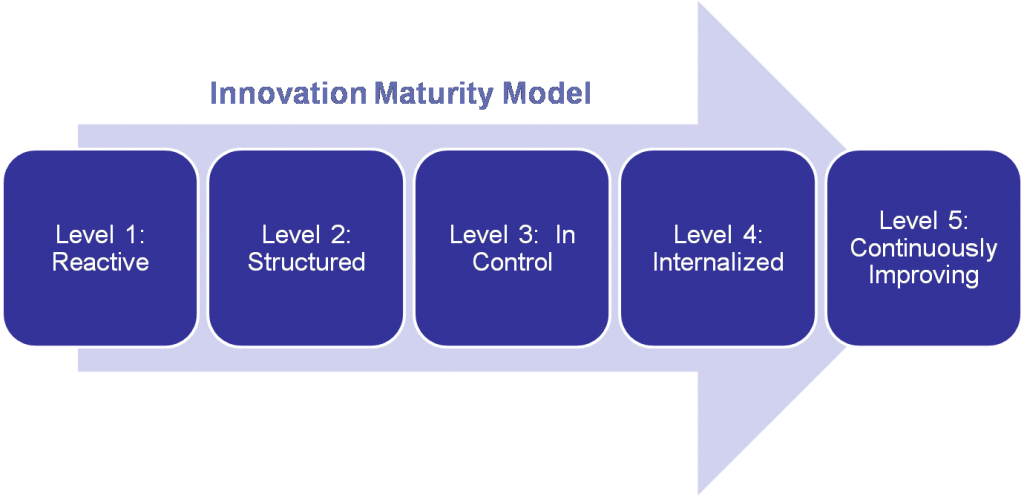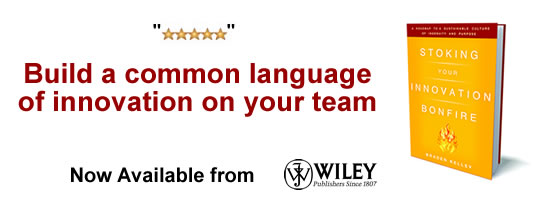
GUEST POST from Howard Tiersky
A major challenge that most large enterprises face is the lack of a true transformation vision.
Most organizations have a basic vision for growth: to serve the maximum number of people, to sell the maximum amount of product, to grow different segments, or to expand in new areas. But in most large enterprises I’ve worked with, that vision is usually about doing more of the same. They optimize what they already have, expand what they already do, update the way that they’re currently selling to very similar customer groups, and interact with their customers in a way very similar to their current operations.
For most organizations to be successful as the world changes around them, they need to change and adapt more profoundly than that. During times of change, driving growth within an organization using tactics similar to current ones don’t often work well. The most common technique I see leaders of large enterprises using to drive growth is to go to each individual area and tell them to continue driving growth in their area. For example, product groups get, “Make new products.”; channel groups get, “Find new channels.”; and the sales group gets, “Sell more stuff!” If you multiply all the effect of these different areas of growth together, you get something that looks like pretty good growth for the organization overall.
Imagine a caterpillar trying to figure out become a butterfly, and having every part of its body come up with its own strategies and methods to contribute. A segmented approach can work when you’re just trying to multiply the scale of what you’re already achieving, with little to no optimization in the different areas.
But there’s a problem with this method. Imagine a caterpillar trying to figure out become a butterfly, and having every part of its body come up with its own strategies and methods to contribute. A segmented approach can work when you’re just trying to multiply the scale of what you’re already achieving, with little to no optimization in the different areas. But it doesn’t work when you’re trying to transform an entire organization, and entire transformation is what we need to do to keep up with the quickly changing digital world. A vision for the whole transformation is what’s going to truly coordinate your entire organization.
You are probably familiar with Lana Turner, movie star from the ’40s and the famous story of her discovery that made her Hollywood starlet. The story goes: Around 1934, 16-year-old Judy Turner (her real name), is skipping school and having a Coke at the Schwab’s Pharmacy counter in Hollywood. She’s spotted by a famous movie director who says, “You’re beautiful and have a wholesome look. You’d be great in a movie. I’m going to take you in for a screen test.” He brings her to the back lot, does the screen test, and it’s fantastic. He puts her in a movie, and she becomes one of the top stars in Hollywood. The rest is history!
There are two problems with this story. First, it’s not actually true. The whole story is fiction, dreamed up by 1930’s Hollywood PR teams. But even if it happened to be true, it would be an extreme outlier. Transformation doesn’t just happen by accident or good luck. It doesn’t even happen because it’s deserved, or because of inherent merit. The other day, I was listening to Howard Stern interviewing Jennifer Hudson about her success. He asked her if, when she was a child and sang in church, everyone knew that she was going to be a star. She said, “No, because there were a lot of kids in my church who could sing like that, and there were a lot of people in my family who could sing like that.” The difference was that, besides the talent, she also had the drive, determination, and the vision to succeed.
This idea of needing vision to succeed isn’t new. The great poet and three times Pulitzer Prize Winner, Carl Sandburg, said, “Nothing happens unless first a dream.” American inventor George Washington Carver, said, “Where there is no vision, there is no hope.” And Helen Keller said, “The only thing worse than being blind is having sight but no vision.”
What is this transformation vision that you need to create? What are its components?
There are two parts to a transformation vision. The first is a vision of how the world is changing. How are your customers going to be changing over the next few years? How is technology going to change, and what do you think your competitors, old or new, might do with the changing landscape?
The second component is to determine what new products and services you can bring to market. How can you take advantage of these changes in environment and your customers, and how will you compete with what your competitors are doing? How does your business model need to change, based on new technology capabilities, or new customer behaviors? How will your operations, cost structure, and ultimately, interaction with our customers, change? Will we be delivering on different channels, serving and supporting them in different ways, or will we be dealing with an entirely new set of customers?
It might seem like you need to be able to see into the future to answer these questions, and I think that’s a major reason why many enterprises don’t have a true transformational vision. They may have a five-year plan, but it isn’t really a vision for transformation — more of just a hopeful projection of growth based on where they are now. They believe they can’t see far enough into the future for it to be practical to have a vision of the future. But here’s the thing: you can foretell the future. I’ll do it right now: It’s about 4:30pm here in New York. I think that in the next couple hours, many people in my area will be having dinner. I’m heading to the airport shortly, for a flight to London, and I predict that there will be lines at the TSA checkpoints that I’ll have to take into account to get on my flight on time. The truth is, we can see into the future to some degree, based on previous experience. We might not always be right, but there’s a lot of information we can use to get a reasonable hypothesis of what the future is going to look like.
Was the iPhone that much of a shock, after the Blackberry Treo and other smartphones that came before? True, it had aspects that we might not have anticipated, and the precise timing might not have been predictable by someone who wasn’t in on Apple’s plans, but its existence on the market was relatively predictable.
To get into the business of predicting the future, we have to get over the fear of being wrong. As Seth Golden said, “The cost of being wrong is less than the cost of doing nothing.” I believe this is absolutely true.
Here’s one last thought about creating transformation visions: It’s important to be able to think in terms of transformation time. Sometimes our focus is so much in the next quarter or the things that we have to get done right now. And that is the reality of the world of the large enterprise, especially if it’s a public company. But in order to be successful long-term, you have to be able to think in terms of transformation time, to think a few years ahead. Why? Because the transformations that you need are often going to take a few years. Products and solutions that burst onto the market, like the iPhone, are in development for years before they ever see the light of day. So many of the things that we see as overnight successes are really the result of long-term visioning, planning, R&D efforts and product development, and there are products that don’t succeed that went through those processes, too. Risk tolerance is important for transformation vision since you have to be ready for a number of potential futures. Those that are successful will be those that define the future of the company.
To recap, take the time to predict the future and be willing to be wrong. Track the changes in the world, and engage yourself in ongoing research, both to initially develop your long-term transformation vision and then to continue to see whether your predictions appear to be coming true. Is the timeframe you initially anticipated changing? If so, adjust your transformation vision to align with what is actually happening. Most importantly, be willing to get it wrong. Second, look at the fundamental value proposition your company brings to your customers. How would that value proposition be best delivered in this future that you envision? If you built a new company today that was going to launch three years from now, how would we build that for where we think the world will be in a few years? You can use that exercise as a way of defining what your transformation vision should potentially be. Take bets, consider and prepare for different possible futures, so you can be prepared for the actual future when it arrives.
This article originally appeared on the Howard Tiersky blog
Image Credit: Pixabay
![]() Sign up here to get Human-Centered Change & Innovation Weekly delivered to your inbox every week.
Sign up here to get Human-Centered Change & Innovation Weekly delivered to your inbox every week.


 You know how sometimes when you order a product you get this inch-thick instruction manual that you never read, but also how there is sometimes a QuickStart Guide of 5-10 simple steps to get you up and running quickly?
You know how sometimes when you order a product you get this inch-thick instruction manual that you never read, but also how there is sometimes a QuickStart Guide of 5-10 simple steps to get you up and running quickly?



